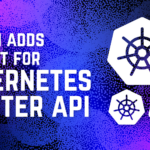This blog post explores how Kubernetes clusters equipped with Argo Workflows can be leveraged for orchestrating offline tasks and batch computing jobs in a cloud-native way.

Traditional Batch Computing vs. Kubernetes Clusters
While mainstream batch computing systems offer solutions for managing and executing batch jobs, they often require users to:
- Learn specific job definition formats, potentially leading to vendor lock-in.
- Manage compute environments, including setting up virtual machines, which can be complex and expensive to maintain.
- Create and manage job queues to prioritize jobs, adding further complexity.
Kubernetes Clusters for Distributed Argo Workflows

Kubernetes clusters paired with Argo Workflows offer a compelling alternative:
- Open-source and Cloud-native: Built upon Kubernetes and open-source Argo Workflows, this approach avoids vendor lock-in and adheres to cloud-native principles.
- Simplified Workflow Orchestration: Workflows are defined as collections of tasks (templates) that can be executed sequentially, in parallel, or conditionally. Each task runs within a container, enabling efficient handling of complex workloads.
- Serverless Execution: Kubernetes clusters with distributed Argo Workflows leverage serverless Alibaba Cloud Elastic Container Instances (ECIs), eliminating the need for manual node management and enabling on-demand scaling of resources.
Key Concepts
- Templates: Define tasks within a workflow, specifying the container image, input parameters, and output.
- Workflows: Orchestrate one or more tasks, defining their execution sequence and dependencies.
- Workflow Templates: Reusable workflow definitions that can be referenced across multiple workflows for efficient workflow creation.
- Serverless Kubernetes Clusters: Utilize ECIs for serverless execution, eliminating the need for Kubernetes node maintenance and enabling automatic resource scaling.
Benefits
- Reduced Complexity: No need to manage compute environments or job queues.
- Scalability: On-demand resource scaling with pay-as-you-go billing reduces costs.
- Faster Execution: Efficient containerized task execution accelerates workflow completion.
- Simplified Management: Open-source and cloud-native for greater flexibility and control.
How to Migrate Batch Jobs to Argo Workflows
- Assessment and Planning: Analyze existing batch jobs and identify their dependencies, resource requirements, and parameters.
- Create Kubernetes Clusters: Set up Kubernetes clusters with distributed Argo Workflows.
- Convert Job Definitions: Convert batch jobs to Argo Workflows templates based on their functionalities.
- Data Storage: Ensure workflows have access to required data stored in Alibaba Cloud services.
- Testing and Verification: Test workflows thoroughly to validate functionality, data access, and resource usage.
- Monitoring and Logging: Leverage Kubernetes cluster observability features to monitor workflow status and logs.
Conclusion
Kubernetes clusters equipped with Argo Workflows offer a powerful and efficient solution for orchestrating offline tasks and batch computing jobs in a cloud-native environment. This approach simplifies workflow management, reduces complexity, and provides greater scalability and cost-effectiveness.
Reference to the Article- Alibaba Cloud










